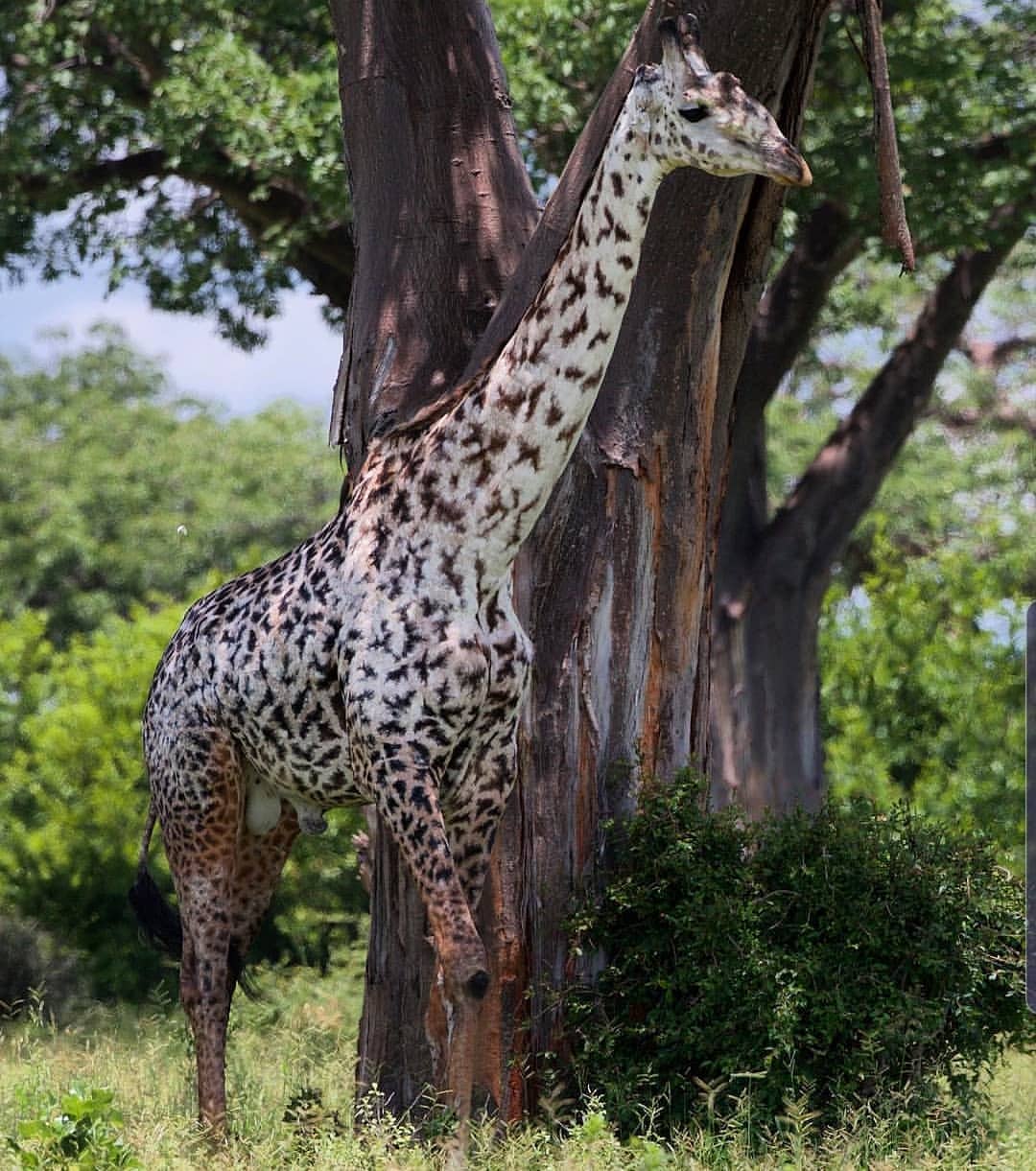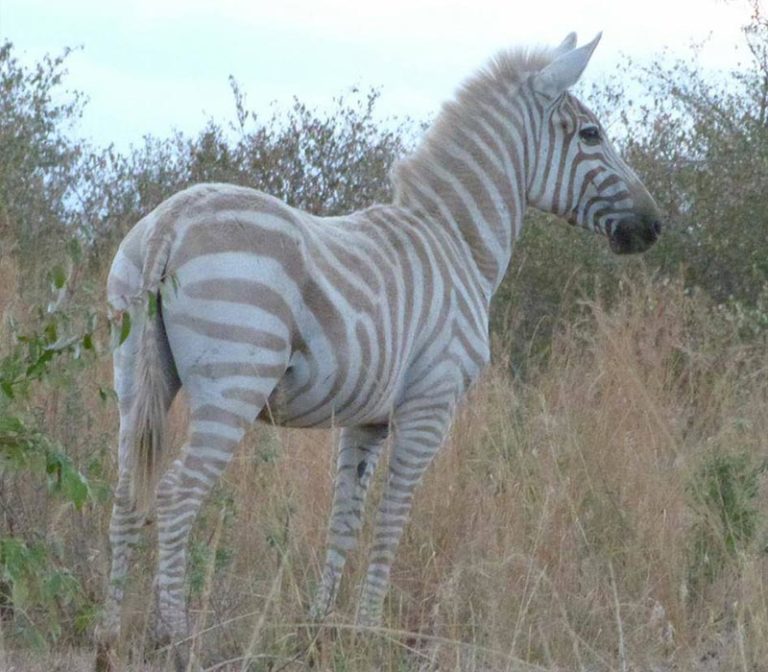The Unique and Unusual: East African Safari Animals That Are Out of The Ordinary
By Britta Foulis – Content Marketing Manager
On your next safari be sure to keep an eye open for the unusual…
There are many animals out there that have unique mutations making them stand out from the crowd. We’ve rounded up some of our most favourite sightings over the years of wildlife that we’ve seen. You might be lucky enough to spot them on your next East African safari in Kenya or Tanzania…
Melanistic Cats
In February 2019, the first sighting of a black leopard was captured on film in Kenya‘s Laikipia region. Then again, in May 2019, another melanistic leopard and her two cubs were captured on remote camera placements by the San Diego Zoo Global Wildlife Conservancy. The leopard family were also recorded in the Laikipia region.
This family is new to the team, and there is now a confirmed number of five black leopards living in this area.
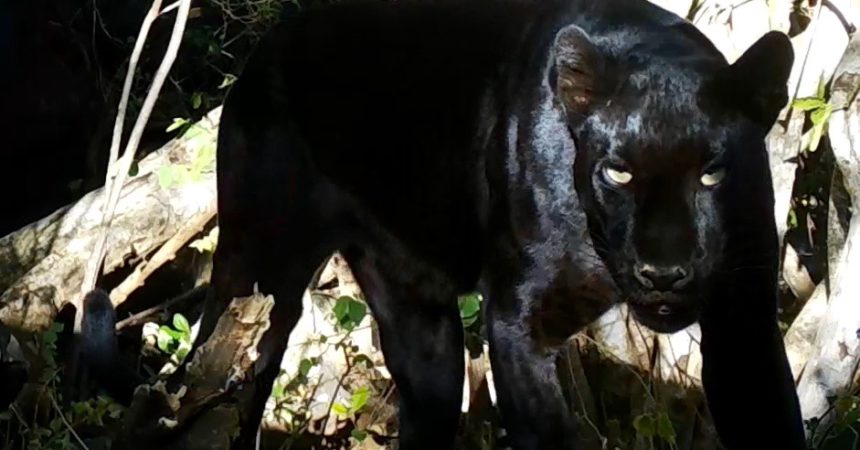
Photo credits: San Diego Zoo
Namiri Plains, one of our camps in the eastern Serengeti, is home to a region that big cats and predators thrive in. Known for its famous cat sightings, one particularly unusual feline has been spotted close to camp in recent months.
While exploring the grasslands close to Namiri Plains, you might come face to face with one of our most beautiful, and unique, wildcats – Manja, the melanistic serval. Named after one of our guides who first spotted him, Manja Kema, this gorgeous feline has become quite the celebrity in the eastern Serengeti region.
Earlier in October 2019, George the Explorer visited Namiri Plains and while there he captured some incredible images of Manja.
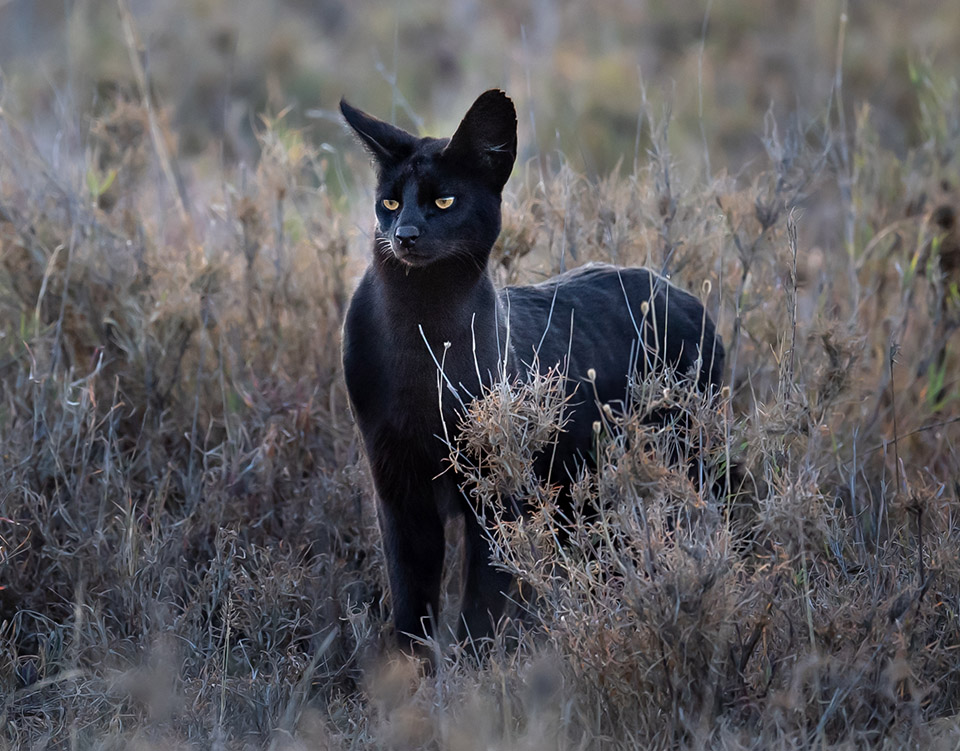
Photo credit: George Turner / George the Explorer
George had the following to say about his encounter with Manja:
“For context, even seeing a “normal” serval is tough. They’re shy, secretive cats that tend to live in tall grasses — the perfect combination for staying unnoticed. Every time I’ve been privileged enough to see them, my heart skips a beat. There’s no guarantee that Manja should he find a mate, will produce melanistic kittens. As melanism is carried by a recessive gene, it could be years before any begin appearing in the area. The hope, for now, is that he continues to flourish in the grasslands and build on his territory. Also, what serval could resist those charming good looks?!”
Gorgeous Giraffes
This beautifully marked giraffe was seen in Tanzania‘s Ruaha National Park, which is home to three of our camps: Kwihala Camp; Jabali Ridge; and the Jabali Private House.
Zebras Don’t Always Have Stripes
On Sunday 15 September, a safari guide came across one-of-a-kind genetically mutated baby zebra in the Masai Mara in Kenya. The guide named the animal after his surname, Tira. This is one of the most unique colourings we have ever seen in a zebra and has already been hailed as the “polka-dot zebra” by locals.
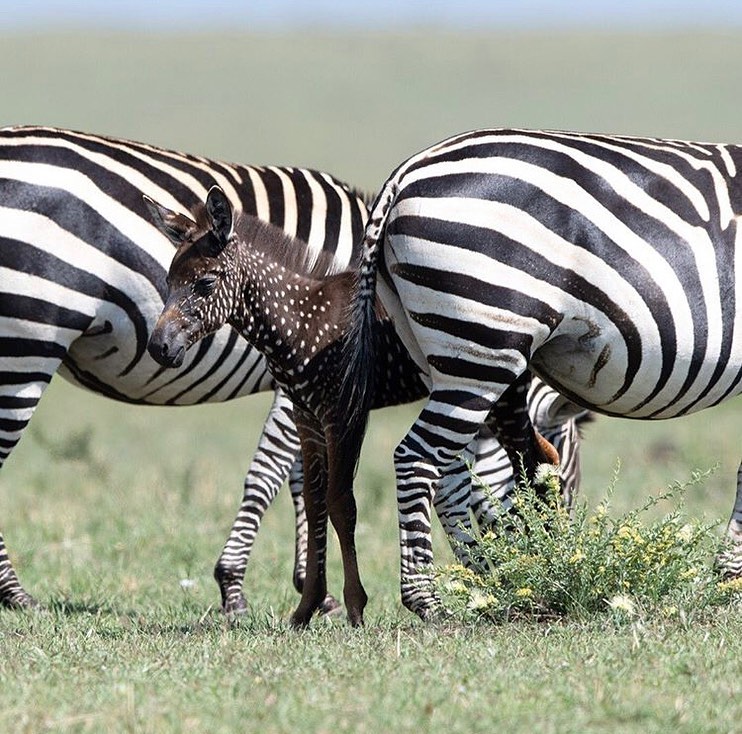
Photo credits: Wildest Africa
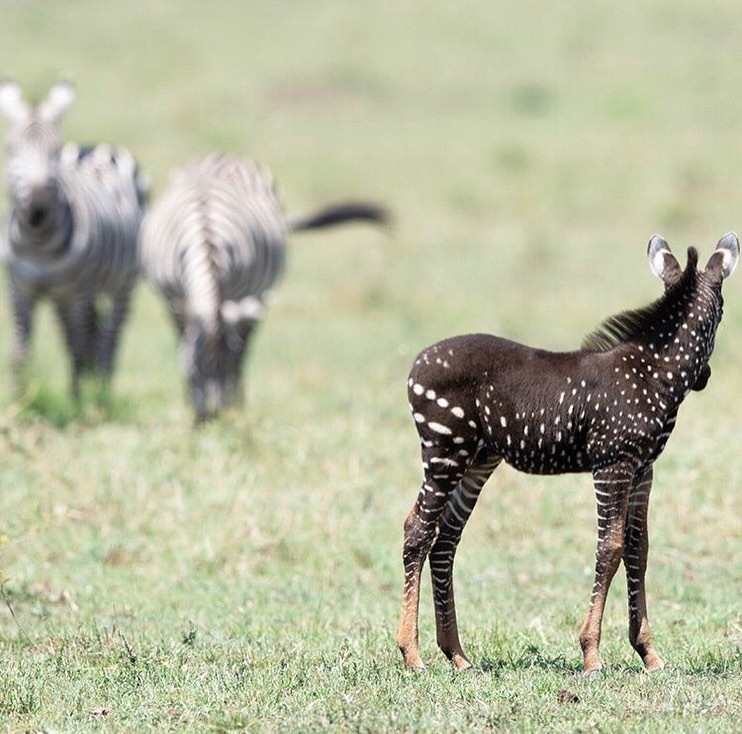
Photo credits: Wildest Africa
The zebra in the image below was spotted close to Rekero, in Kenya. It almost looks as if he would fit in better somewhere snowy, however, you may have the chance of spotting this unique animal roaming the grasslands of East Africa on your next safari.
What Causes These Unique Colourings?
These unique colouringsare mostly genetic variations, very much like you get people with dark skin, light skin, blue eyes, brown eyes and blonds and brunettes.
Science Made Fundefines these two genetic variations as follows: “Albinismis a condition in which there is an absence of melanin. Melanin is what is present in the skin and is what gives skin, feathers, hair and eyes their colour. Vertebrates with albinism are not only white (or sometimes pale yellowish) in colour but they also have very pale eyes, often pink or red in colour as the blood vessels show through.Leucismis only a partial loss of pigmentation, which can make the animal have white or patchily coloured skin, hair, or feathers. However, the pigment cells in the eyes are not affected by the condition.”
The post The Unique and Unusual: East African Safari Animals That Are Out of The Ordinary appeared first on Asilia Africa.
More Destinations Articles

What’s the difference? National Parks, Game Reserves, and Conservancies in East Africa
02 February 2020To most of us, a national park, game reserve, or conservancy are all the same...

7 Of Our Favourite Things About Lake Manyara National Park
04 December 2019Lake Manyara National Park is located in Tanzania's Arusha and Manyara region...

Naboisho: Home To The Mara’s Newest Pool
28 November 2019Naboisho is now home to the Mara Naboisho Conservancy’s newest pool. During t...

Guest Gallery: The Serengeti At Its Best
27 November 2019We recently had the pleasure of welcoming guests, Chris and Monique Fallows t...
